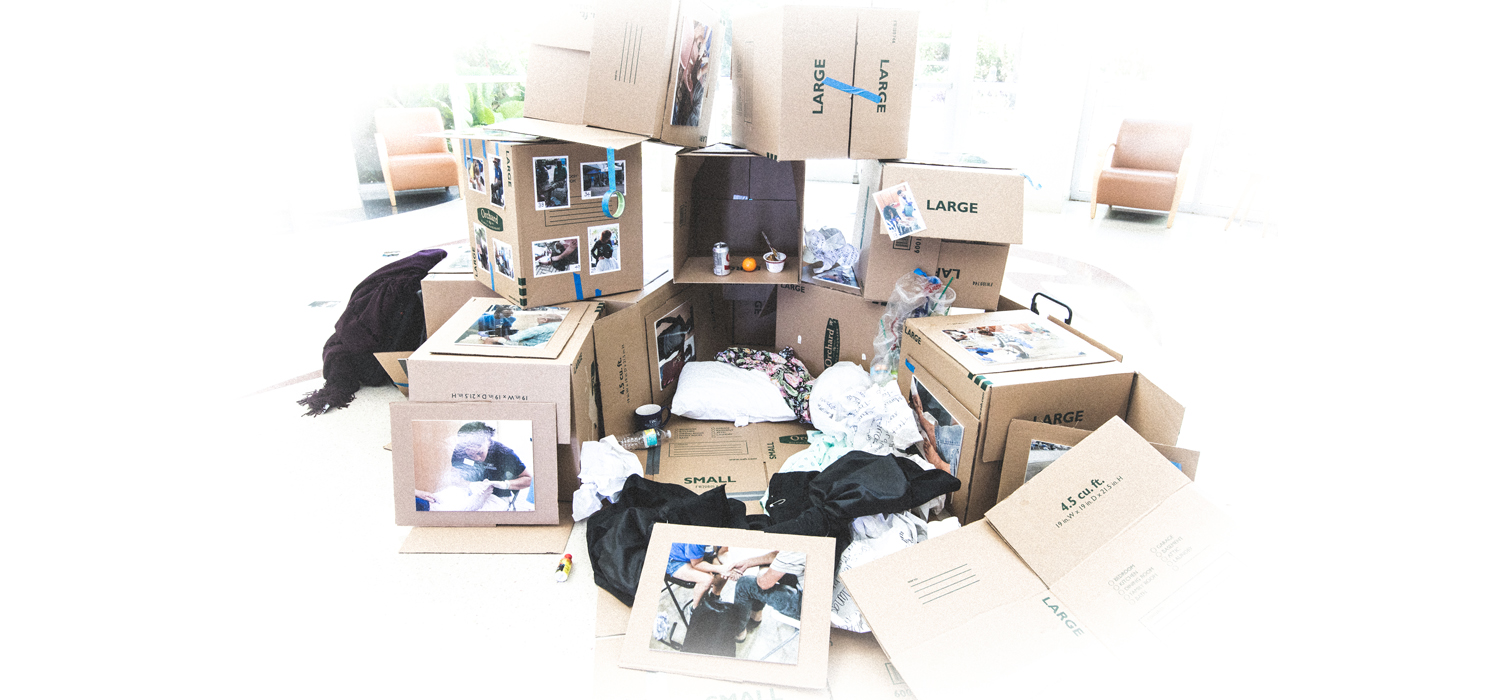National Academy of Medicine “Visualize Health Equity”
Nationwide Community Art Project

This project used Dr. Leihr’s Field to Forum approach whereby research fieldwork exploring the health challenge of caring for one’s feet while experiencing homelessness was transformed into an artistic medium to create a forum for dialogue. The forum exhibit is being used to raise awareness of issues affecting persons experiencing homelessness and has been tested by Emily Schayes, a BSN Honors Student, as an intervention to change community perceptions of this vulnerable population. Drs. Opalinski, Liehr and Stein serve as PJHR Affiliate Faculty.
A team of nurses concerned about the health of persons experiencing homelessness informally asked both participants and volunteers assisting with a weekly meal program, “What is your biggest challenge in taking care of your health while you are homeless?”. The challenge of caring for one’s feet while homeless repeatedly surfaced in conversations. Some participants removed their shoes to reveal cuts, blisters, and sores on their feet and legs. Keeping clean, dry socks due to weather conditions and use of socks for toilet paper and personal hygiene were often described as challenges by those experiencing homelessness. Simple nail clippers were not easily accessible and if available, often not strong enough to clip thick nails.
As community partners, we believe that although homelessness resists easy solutions, nurses and health care providers can support and equip communities to envision and implement creative solutions to address key health inequities that may be seldom recognized. To this end, our team of health professionals and community partners mobilized resources to provide a comprehensive, community-based foot care clinic for persons experiencing homelessness. The original intent of the project was to meet a health need in a creative way. However, increasingly another objective emerged--to raise awareness about the challenges people experiencing homelessness face in caring for their feet, and through visual images create a forum to illuminate this inequity, but also the draw attention to the possibility for community-driven solutions.
Participants in the foot care clinic were given the opportunity to consent to be photographed, and they subsequently chose the final 50 photos out of 587 to tell their stories. The photographs were then used to create an interactive exhibit, crafted through a visual anthropology lens. The images contained in this mobile exhibit, we hope, will foster both compassion and respect for the complexities of daily living faced by people experiencing homelessness.